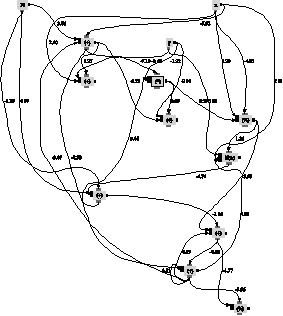|

PhD Project
Tony E Lewis
Primary PhD Supervisor
George D Magoulas
This e-mail address is being protected from spam bots, you need JavaScript enabled to view it
Secondary PhD Supervisor
Boris Mirkin
This e-mail address is being protected from spam bots, you need JavaScript enabled to view it
Project Details
College Studentship
October 2007-September 2010
Keywords
Genetic Programming
Complexity
Representation
|
Genetic Programming Representations for Complex Systems Modelling
Project Aims
Genetic Programming (GP) researchers have proposed several forms of computer program (or representations) to be used for artificial evolution. Typically, representations are highly effective during the initial search phases of evolution but stagnate before deep levels of complexity are developed. The research aims to find methods of improving the
long term acquisition of novel features in GP.
TREAD: A New GP Representation
The research has generated a new representation, TREAD (Tangle Representing Execution And Data), which combines aspects of flow of execution and flow of data systems. TREAD evaluation is performed in an iterated manner which allows for complex solutions to tackle complex problems. TREAD has several novel features:
- Each node has a "state of execution" (indicating whether a node is computing new values during a given iteration). The state of execution is determined by the sign of the value at an extra "trigger" input socket. An extra "activated" output socket indicates the current state of execution.
- A node's input sockets are permitted to have multiple input connections. The value used by the node is the sum of the values from the input connections.
- Each connection has a real valued (possibly negative) weight which its signal is multiplied by.
To offset the computation required for these complex programs, evaluation is accelerated withGPU computation using nVidia's CUDA technology.

A randomly created TREAD program. The trigger socket is displayed at the top of the node and the activated socket at the bottom. Weights are displayed near their connections.
Future work
Planned research includes investigating the effects of TREAD's features, investigating the role of modularity on long term complexity growth and using the findings to attack new kinds of complex problems.
Publication
"TREAD: A New Genetic Programming Representation Aimed at Research of Long Term Complexity Growth", to appear in the Proceedings of the Genetic and Evolutionary Computation Conference (GECCO) 2008.
|
23-29 Emerald Street, London WC1N 3QS phone: +44 (0)20 7763 2174 www.lkl.ac.uk
|
|


